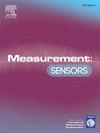探索基于脑电图的生物标志物,以改进早期阿尔茨海默病的检测:基于特征的机器学习方法
Q4 Engineering
引用次数: 0
摘要
本文全面研究了脑电图(EEG)信号处理和分析技术,旨在加强阿尔茨海默病(AD)的早期诊断方法。该研究利用一个数据集,其中包含被诊断为轻度认知功能障碍(MCI)、阿氏痴呆症、健康对照者的脑电图数据,并探索了预处理方法和特征提取技术,特别是支持向量机(SVM)的机器学习模型。在预处理阶段,应用了高通、低通、Savitzky-Golay 和中值滤波器的组合,并全面回顾了滤波器比较文献。特征提取包括三个主要类别:"统计"、"频域 "和 "时域"。这项工作的范围是探索所有这三个领域的特征,并建立基于 SVM 的高效分类模型。在调查中,我们利用统计特征实现了 92% 的分类准确率。时域特征的准确率为 87%,而频域特征的准确率也达到了 87%。本研究的主要目的是通过先进的脑电信号处理和机器学习技术,重点关注预处理方法、特征提取和分类准确性,以提高早期注意力缺失症的诊断率。本文章由计算机程序翻译,如有差异,请以英文原文为准。
Exploring EEG-Based biomarkers for improved early Alzheimer's disease detection: A feature-based approach utilizing machine learning
This paper presents a comprehensive investigation into Electroencephalogram (EEG) signal processing and analysis techniques aimed at enhancing early diagnosis methods for Alzheimer's Disease (AD). Leveraging a dataset that has EEG data of individuals diagnosed with Mild Cognitive Impairment (MCI), AD, Healthy Controls, and the study explores Preprocessing Methods and Feature Extraction Techniques, with machine learning model notably Support Vector Machines (SVM).
In the preprocessing phase, a combination of high pass, lowpass, Savitzky–Golay, and median filters are applied, informed by a comprehensive review of filter comparison literature. Feature extraction encompasses three primary categories: ‘Statistical, ‘Frequency Domain’ and ‘Time Domain’. The scope of this work is to explore features in all these three domains and build SVM based model for efficient classification. In our investigation, we achieved a categorization accuracy of 92 % through the utilization of statistical features. Employing time domain features resulted in an accuracy of 87 %, while frequency domain features also yielded an 87 % accuracy rate in our study. The primary objective of this study is that it aims to enhance early AD diagnosis through advanced EEG signal processing and machine learning techniques, focusing on preprocessing methods, feature extraction, and classification accuracy.
求助全文
通过发布文献求助,成功后即可免费获取论文全文。
去求助
来源期刊

Measurement Sensors
Engineering-Industrial and Manufacturing Engineering
CiteScore
3.10
自引率
0.00%
发文量
184
审稿时长
56 days
 求助内容:
求助内容: 应助结果提醒方式:
应助结果提醒方式:


